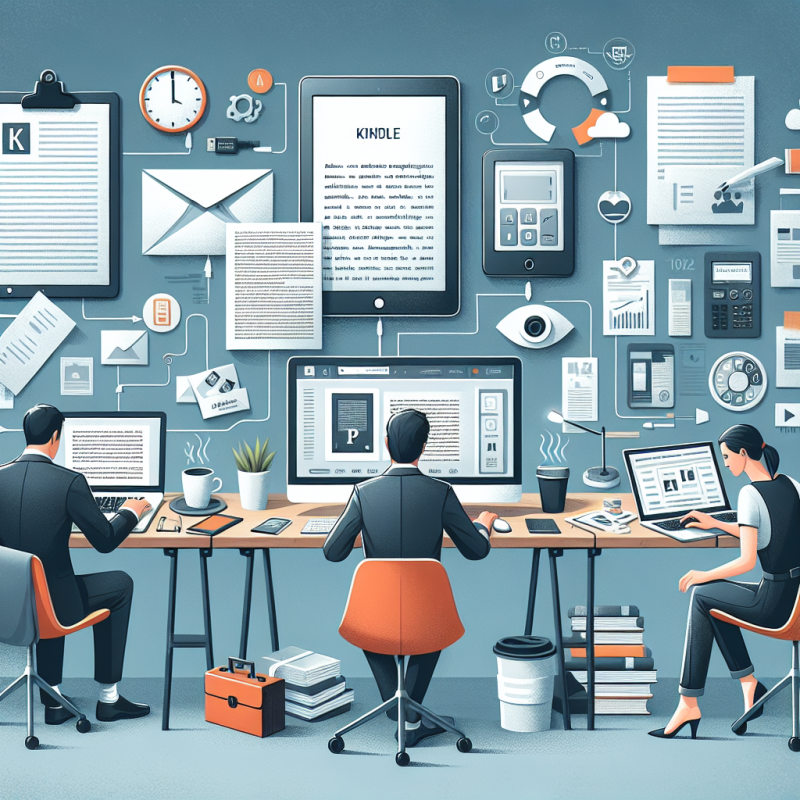AI Design & Media, AI Marketing Solutions, AI Productivity Apps, AI Tools for Creators, AI Writing Tools
How to Integrate AI-Assisted Translation Services
AI Translation Integration is transforming global communication, allowing authors and businesses to reach wider audiences with ease. In this guide, we'll explore practical steps and tips for integrating AI-assisted translation services effectively into your workflow.
Understanding AI Translation Services: The Key to Global Reach
Harnessing the power of AI translation services can be like opening a gateway to new audiences across the globe. Imagine suddenly being able to communicate seamlessly with people from different countries without language barriers—this is the potential that AI translation offers. These services utilize sophisticated algorithms and neural networks to convert content from one language to another in real-time, making global communication faster and more effective than ever before.
With the rapid evolution of technology, implementing AI translation solutions has become more straightforward. By leveraging AI-powered language tools, you can enhance your content delivery, making it more accessible to diverse populations. Whether you're an author looking to reach non-native readers or a business aiming to enter foreign markets, AI translation systems provide a critical edge.
Integrating AI Translation: Practical Steps and Considerations
When considering integrating AI translation into your projects, setting up a robust system is crucial. Start by assessing the specific needs of your audience. Who are you trying to reach, and what languages are they comfortable with? Next, choose the right AI translation tools that align with your requirements. There are numerous AI translators available, each offering unique features and capabilities.
Once you have selected your tools, focus on seamless integration with your existing content platforms. Whether you're using a website, an app, or any digital product, it's essential to choose translation solutions that fit seamlessly into your workflow. Automated translation integration ensures consistency and accuracy across different channels, enhancing user experience.
Remember, integrating AI translation is not just about technology—it's about connecting with your audience in meaningful ways.
Best Practices for AI-Assisted Language Support
To get the most from AI translation integration, adopting some best practices is key. Regularly updating your AI systems with new linguistic data will keep translations more accurate and context-aware. Testing your translations with native speakers can help refine the content and ensure cultural relevance.
Also, consider the ethical aspects of AI translation. Misuse of automated tools can lead to misunderstandings or misrepresentations. Always ensure that translations uphold the integrity and intent of the original message.
Finally, continue to explore and experiment with different AI translation services. As technologies evolve, so too will the opportunities to refine and improve your translation strategies.
AI Translator Setup: Customizing Your Translation Experience
Setting up an AI translator involves more than simply subscribing to a service. Customization is crucial to meet your unique needs. Evaluate different machine translation integration options, focusing on those that offer language pairs relevant to your target audience.
Look for features such as glossary and style guide integration, which can help maintain brand voice and terminologies. This customization ensures that your translations are not only accurate but also reflective of your unique style and tone.
- Define clear goals and objectives for your translation needs.
- Select AI translation services that offer relevant language support.
- Continuously update and test your translation systems.
- Engage with native speakers for quality assurance.
Want to promote your book after it’s published? Check out our Book Marketing Articles.
According to Wikipedia, translation involves the process of transferring text from one language to another, a task that AI enhances with speed and accuracy.
Exploiting AI Translation Systems for Maximum Impact
AI translation systems provide an unprecedented opportunity for expanding your reach beyond traditional limits. By enhancing the precision and speed of translation, these systems unlock doors to new cultural and business landscapes. However, while technology is a powerful enabler, the human touch remains invaluable for ensuring the quality and appropriateness of content.
Remember, while AI can handle vast amounts of translation work, the final touch should always consider human insight to cater to specific cultural nuances and preferences without losing the essence of the original message. This balance of automation and human oversight is crucial for achieving the most successful integration of AI-assisted language support.
Frequently Asked Questions About AI Translation Integration
Q: What is AI Translation Integration?
A: AI Translation Integration refers to incorporating AI-powered technologies into translation processes to enhance efficiency and accessibility across languages.
Q: How can AI translation benefit authors?
A: AI translation allows authors to reach non-native readers, expanding their audience and potential market for their books.
Q: Are AI translations as accurate as human translations?
A: While AI translations are becoming increasingly accurate, the human touch is often necessary to ensure contextual and cultural precision.
If you're serious about growing your author career, don't miss out on these free tools and templates built specifically for writers. Access all 7 free resources here.

